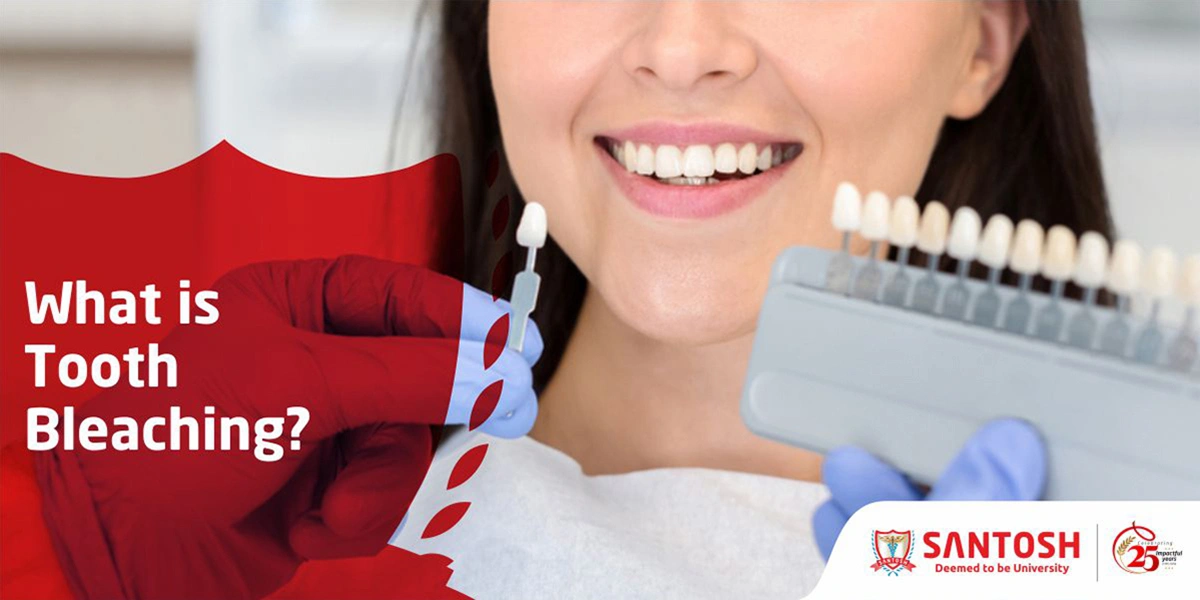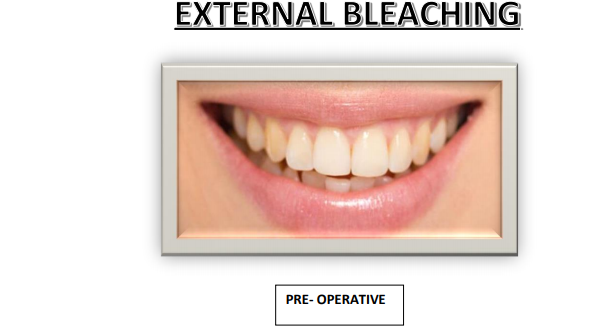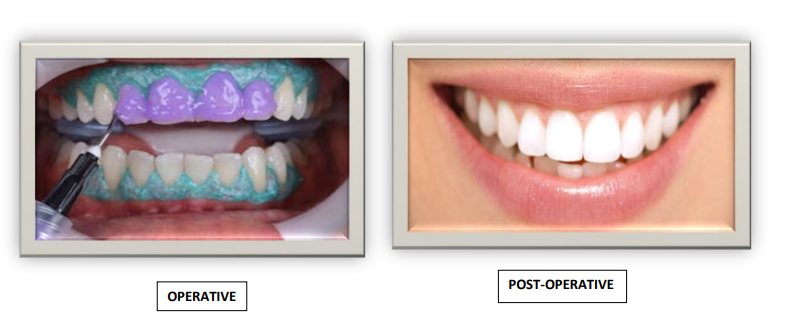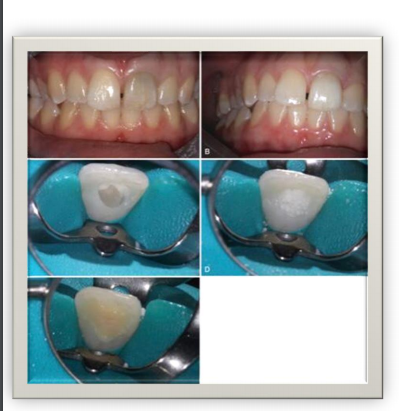
Tooth whitening or tooth bleaching is the process of lightning the colour of human teeth. Whitening is often desirable when teeth become yellowed over time for a number of reasons, and can be achieved by changing the intrinsic or extrinsic colour of the tooth enamel. The chemical degradation of the chromogens within or on the tooth is termed as bleaching. Hydrogen peroxide (H2O2) is the active ingredient most commonly used in whitening products and is delivered as either hydrogen peroxide or carbamide peroxide.
Hydrogen peroxide is analogous to carbamide peroxide as it is released when the stable complex is in contact with water. When it diffuses into the tooth, hydrogen peroxide acts as an oxidising agent that breaks down to produce unstable free radicals. In the spaces between the inorganic salts in tooth enamel, these unstable free radicals attach to organic pigment molecules resulting in small, less heavily pigmented components. Reflecting less light, these smaller molecules create a "whitening effect". There are different products available on the market to remove stains. For whitening treatment to be successful, dental professionals should correctly diagnose the type, intensity and location of the tooth discolouration. Time exposure and the concentration of the bleaching compound, determines the tooth whitening endpoint. Prior to proceeding to tooth whitening alternatives, it is advised that the patient comes into the dental office to have a comprehensive oral examination that consists of a full medical, dental, and social history. This will allow the clinician to see if there is any treatment that needs to be done such as restorations to remove caries, and to assess whether or not the patient will be a good candidate to have the whitening done. The clinician would then debride (clean) the tooth surface with an ultrasonic scaler, hand instruments, and potentially a prophy paste to remove extrinsic stains as mentioned above. This will allow a clean surface for maximum benefits of whichever tooth whitening method the patient chooses. Bleaching can classified as extenal and internal bleaching. Follwing pictures illustrates case of bleaching (1) External bleaching. (2) Internal bleaching.



Clinical case illustrating clinical steps of the walking bleach technique.
A. Situation prior to endodontic treatment and internal bleaching. Discolored maxillary left central incisor due to trauma.
B. Postoperative situation after endodontic treatment and internal bleaching using the walking bleach technique.
C. Access cavity after barrier placement.
D. Application of sodium perborate.
E. Temporary coronal seal with adhesive restoration.
Teeth whitening has become the most promoted and mentione methodology in cosmetic dentistry, its painless procedure performed under one appoinments. According to research, tooth whitening can produce positive changes in young participants’ Oral Health Related Quality of Life (OHRQoL) in aesthetic areas such as smiling, laughing, and showing teeth without embarrassment.
For more info,visit: https://www.santosh.ac.in/

